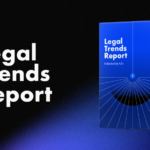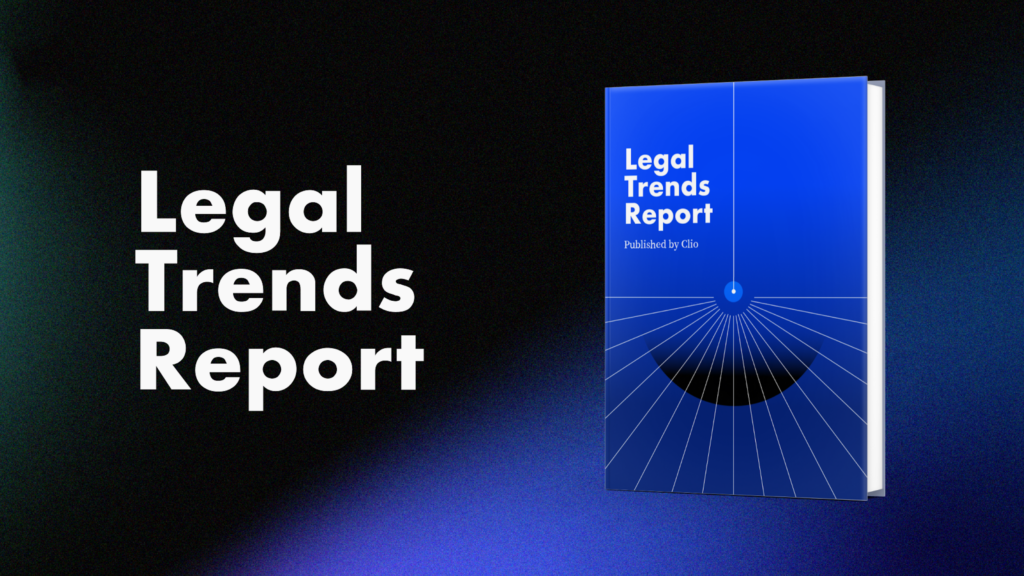As the legal industry’s most in-depth examination into the state of legal practice, our most recent Legal Trends Report brings together crucial insights on the most important issues facing the legal profession—including the proliferation of AI, the future of pricing models, levers to improve client intake, and how law firms are spending for growth.
Across the board, we see a disconnect between where law firms are focusing their energy and where they could have the greatest impact. Legal professionals—from lawyers to paralegals and administrative assistants—are devoting a significant portion of their time to tasks that may not be bringing value to their firms. Meanwhile, prospective clients are waiting on emails and phone calls that go unanswered, while existing clients want to interact using communication and payment options that most law firms don’t offer.
Read the latest Legal Trends Report today.
Our data provides a valuable starting point for addressing these problems. Understanding which investments are helping firms improve productivity and grow their businesses, the tremendous impact of AI and automation, and what their clients are looking for, will help firms make informed, data-driven decisions and support their lasting success.
Change doesn’t happen overnight, though. Building new habits—whether it’s integrating automation into your law firm’s daily operations, improving client intake, or expanding your payment offerings—requires commitment. But, in improving their law firms one process at a time, legal professionals will position themselves on a path to success, and with time, these new habits will become ingrained in the background of their firm.
About the Legal Trends Report
Now in its ninth year, the Legal Trends Report includes aggregated and anonymized data from tens of thousands of Clio users and survey responses from more than 1,000 legal professionals and over 1,000 consumers in the U.S. general population.
Highlights from our most recent Legal Trends Report
Below, we’ll highlight the key insights covered in the Legal Trends Report, and explore how firms can leverage these insights to improve performance.
AI adoption is accelerating rapidly
When we last researched AI in 2023, 19% of law firms were using AI in their practice.
Over the last year, that number has skyrocketed: a whopping 79% of surveyed legal professionals are now using AI in some capacity in their practice, while 25% have adopted AI widely or universally.

AI adoption is no longer limited to legal trailblazers—it’s the new normal in law firms. Regardless of where firms stand on AI adoption, it’s time to start thinking critically about the impact of AI on law firm operations and legal services.
Clients want to work with firms that use AI
Nearly half of clients would prefer to work with law firms that use AI, which suggests that they see AI as a means of offering better, more efficient legal services than firms not using AI.
This number is likely to increase when we consider how quickly consumer attitudes surrounding AI use have shifted. In the 2023 Legal Trends Report, only 46% of consumers said they were open to working with law firms that used AI-powered software.
There’s a growing financial risk for hourly billing
Seventy-four percent of billable work that’s billed by the hour could be automated by generative AI. The types of work that have the highest automation potential include documenting and recording information, getting information, and analyzing data or information—all of which make up an average of 66% of hourly work that the average law firm takes on.
As a result, firm leaders may need to reconsider their billing frameworks. If AI can reduce the time legal professionals spend on billable work, this would result in less revenue when billing by the hour. If charging based on fixed or flat rates, however, firms could have time to work more cases while still largely retaining what they charge for individual cases.
Flat fee billing is growing
Firms are billing 34% more of their cases on a flat fee basis compared to 2016. Firms have also been charging 20% more for flat fee cases since then. Since AI automation has the potential to reduce the value of hourly billable work, firms that shift to flat fee billing models stand to retain the value of their casework while opening up capacity to help more clients through greater efficiency. In fact, firms using AI are more likely to bill exclusively with flat fees.
Clients prefer flat fee billing
As it turns out, offering flat fees could also be helpful for client satisfaction. Seventy-one percent of clients would prefer to pay a flat fee for their entire case and 51% would prefer to pay a flat fee for individual activities within their case. Still, hourly billing is the most common, with 71% of firms offering it to clients.
Flat fee work gets billed out and paid faster
Legal professionals billing with flat fees are nearly twice as likely as those billing hourly to collect payments almost immediately.

Firms aren’t just billing and getting paid for flat fee matters faster—as it turns out, matters that are billed on an hourly basis take approximately 2.6 times longer to close compared to flat fee matters.
More productive firms spend more on technology and marketing
Since 2013, firms have increased their spend on software by an average of 20% each year—at a greater pace than growth in revenue.
Based on recent data, firms that invest more in software and marketing have utilization rates above the industry average of 37%—which amounts to just under three hours of billable hours per day—and they also earn much higher profit margins.
Firms with above-average productivity:
- Spend 12% more on software
- Spend 41% more on marketing
- Earn 21% more in profitability
It’s tough for potential clients to get in touch with a lawyer
We hired a third-party research company to conduct a secret shop for insight into the experience of finding a lawyer in 2024—this was a follow-up of a similar study in 2019. The study involved emailing and phoning 500 law firms with a client inquiry.
- Just 33% responded to our emails (less than the 40% in 2019)
- Only 40% of firms answered our phone calls (a significant drop from 56% in 2019). In total, 52% of firms either answered our phone calls or phoned us back, meaning 48% were essentially unreachable by phone.
Intake solutions can help improve client experience
To further support law firms in providing better client services, we looked at several technologies designed to enhance a firm’s ability to respond to clients when they reach out—and how these capabilities can improve key areas of business performance.
This year, we’ve looked deeper into how certain capabilities within Clio Grow can support law firms across several important business metrics, including:
- Revenue generation
- Lead volume
- Time to hire
- Conversion
We found that firms using these client-facing capabilities saw 51% more client leads—meaning they were able to connect with more potential clients overall—and 52% higher revenues.

Where does the data come from?
The Legal Trends Report uses a range of methodological approaches and data sources to deliver the best insights about the state of legal practice and strategies for future growth.
Clio data
We’ve analyzed aggregated and anonymized data from tens of thousands of legal professionals in the U.S. This data provides important insights about how technology is currently being used by legal professionals, as well as its impact on firm performance.
Survey of legal professionals
We surveyed 1,028 U.S. legal professionals from June 5 to June 23, 2024. The legal professionals we surveyed included lawyers as well as support staff—such as paralegals and administrators—who are engaged in the management side of their practice.
Survey of the general population
We surveyed 1,003 adults in the U.S. general population from June 28 to July 2, 2024. This survey was designed to gauge attitudes, opinions, preferences, and behaviors regarding the legal profession among individuals who have hired lawyers in the past or who may become potential legal clients in the future. This sample is representative of the U.S. population by age, gender, region, income, and race/ethnicity based on the most recent U.S. census statistics.
Automation analysis
We utilized an internally hosted large language model (LLM) to map Clio Manage work activities to activities in the Occupational Information Network (O*NET) Database that are applicable to the practice of law. We then used ChatGPT-4 to determine to what extent each O*NET work activity could be automated with AI. The LLM assigned an automation score between 0 (no potential for automation) and 100% (completely automatable) and provided a justification, which we used to evaluate and refine our study. From this analysis, we determined to what degree each type of work could be taken on by AI.
Next, we used a dataset of over 7 million time entries from anonymized and aggregated billing data from tens of thousands of lawyers and categorized them according to the standardized work activities provided in the O*NET Database. In doing so, we’ve compared the automation potential for certain types of work with respect to how much that work contributes to firm revenues in the form of hourly work.
Law firm financial statements
We partnered with Clio-Certified Consultant, CPN Legal, to source historical, anonymized profit and loss reports and balance statements from 122 law firms. The historical statements cover decades of law firm finances from solo, small, and medium-sized law firms.
Secret shop
Clio partnered with market research agency Lux to conduct the Secret Shopping study, which aimed to evaluate law firm performance on digital and traditional channels. Lux conducted secret shops of 500 law firms from June 20 to July 5, 2024.
Uncover more insights on the state of legal practice—read the latest Legal Trends Report today.
We published this blog post in October 2024. Last updated: .
Categorized in:
Clio
#Newest #Legal #Trends #Report










